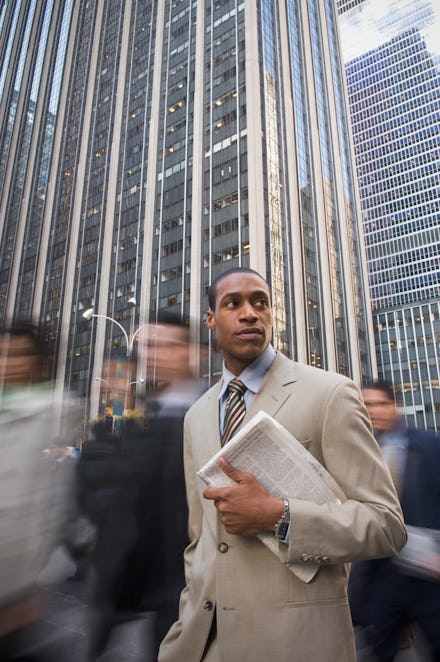Study Shows That Walking While Black Is the New Driving While Black

Driving while black in America is a fraught endeavor. Even if you follow the law and drive like everyone else, there's still a strikingly disproportionate chance you'll be stopped and searched by the police.
A recent study the Washington Post reported shows that walking while black presents its own set of perils as well.
According to researchers at Portland State University and the University of Arizona, black pedestrians face significantly worse treatment than white pedestrians at crosswalks. In these circumstances, the discrimination black citizens face comes from random motorists, not law enforcement, and the study drives home the point that racism often manifests itself in subtle, unconscious actions.
The study: Researchers conducted their study, which was published in the journal Transportation Research, at a marked crosswalk in the middle of one-way street in downtown Portland, Oregon. Black and white research participants waited to cross at the crosswalk, and researchers timed how long it took for drivers to stop and allow the pedestrians to cross.
The researchers found that the average number of drivers that passed black pedestrians without stopping was more than double the average number of those who passed white pedestrians. The wait time before crossing for a black pedestrian was 32% longer than a white pedestrian.
Motorists appear to take cues from one another in contributing to behavior that comes at the expense of a waiting black pedestrian. As you can see in the chart below, there's a disparity between how often a car stops for white and black pedestrians, but that gulf widens dramatically when two cars or more pass a pedestrian. Drivers "may observe other drivers not stopping for black pedestrians, and use this evidence to inform or even justify their decisions to not stop," the study says.
The decision not to stop is not a deliberate, conscious act. Rather, the drivers' prejudice stems largely from implicit bias, the kind of reflexive judgment that lurks beneath conscious thought and is harbored by minorities and whites alike.
But the subtlety of implicit bias doesn't mean it's any less important. The study has potentially serious implications for the sharply differing public health outcomes between white and black Americans. Minority pedestrians, after all, are hit more often by cars, which raises the question: Are discriminatory motorists partially to blame?
"It's complicated," Tara Goddard, a doctoral student at Portland State University and lead author of the study, told Mic in an email.
Goddard said there are simply too many variables at play in the data about white and black traffic fatalities to conclude that driver behavior is responsible for the discrepancy.
"The built environment has impacts in the whole chain of a crash: from the behaviors that encourage poor driving (like wide roads that facilitate speeding), to the type and severity of the crash itself (such as sight lines, lack of marked crosswalks, speed of the car), to the important moments post-crash (such as emergency response times, hospital care)," Goddard explained.
There's also the question of pedestrian behavior.
"No one has researched yet whether experiencing biased behavior from drivers leads to pedestrians taking more risks or accepting smaller gaps in traffic, because they know that drivers aren't going to stop for him," Goddard says. "That's an area that needs future research."
Nonetheless, next time you're behind the wheel, it's worth bearing in mind: Be courteous to every pedestrian you see. It's a good rule of thumb, regardless of how forward-thinking you think you are.